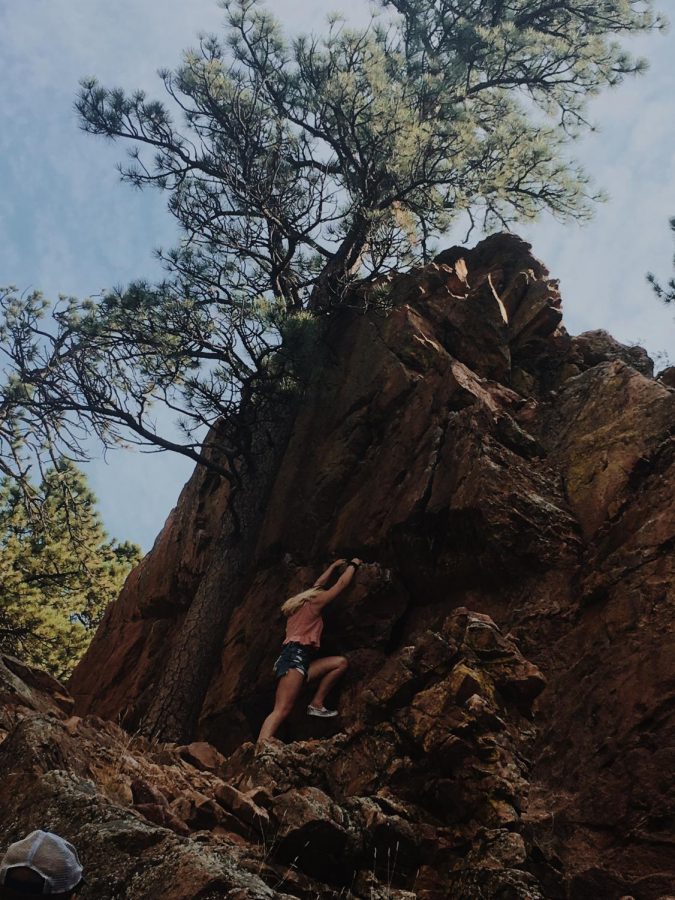The art of microadventures should be valued more

More stories from Olivia Luplow
One of my biggest pet peeves is when people ruin a perfectly good experience by trying to make it excessively fun or last forever. For me, there comes a point when all the fun has been used up, and continuing to participate in an activity becomes an almost painful, soul-sucking experience.
Once you reach the highest level of enjoyment, an experience that could have been stored in your brain as memorable morphs into feelings of tiredness and overactivity. Soon enough, that one fun experience has been whittled down to something awful, terrible, and the last thing that you would ever want to do.
The idea that adventures can only consist of “big things” has become a common phenomenon in today’s society. Something is only considered exciting if it is excessive, all-consuming, and occupies hours upon hours. This is sad, though, because within this cycle of thinking we fail to recognize the beauty in small adventures. Or, as I like to say, “the art of doing things little.”
My latest microadventure began with my decision to join Outdoor Adventure Club. This stemmed from a lunchtime persuasion by senior Grace Clinger. She informed me that the club would be attending Terra Firma Bouldering Co, an up-and-coming place for rock climbing. I had been rock climbing a few times before; however, the chance to try it again intrigued me. I immediately agreed to go, and when Friday came around it turned out to be one of the most enjoyable experiences I have had in a while.
The combination of new people in a new and unfamiliar place coming together in order to embark on, essentially, a microadventure excited me infinitely. Now, because of one small risk, I was able to explore a new passion of mine as well as meet a new and interesting group of people.
For me, there is always an adventure in things done little. There is more enjoyment to be found in an hour coffee date with a friend rather than a sleepover lasting 26 hours. Although I do find enjoyment in being around people I love and feel close to, no matter how much fun I am having, there will always come a point when I am ready to leave. Part of it stems from a need to be by myself, yet another part of me yearns to end the experience before it is ruined.
Perhaps my ambivert tendencies influence these thoughts of mine, but it is hard for me to imagine that others do not feel the same way. I believe that everyone, whether they be extroverted or introverted, has a point where things aren’t fun anymore.
Maybe, as a society, we have been conditioned to push past this point. We feel pressured by the seemingly endless supply of energy from our peers around us. Maybe, as students, we spend seven hours of our day engaged in forced participation. Maybe, just maybe, all of us possess the ability to appreciate the beauty contained within microadventures, but this ability has been squashed by society’s idea of “fun.”
The term microadventures can mean something different for everyone. For some, simply watching a riveting TV show is an adventure. For others, a microadventure could be as big as a hike up a mountain. There are no requirements associated with them; each person makes the decision based on their own personal requirements.
The beauty of microadventures, also, is that they can absolutely be done alone. A question I often find myself asking is “Why does society tell us its bad to be alone?” So often I hear endless propaganda pushing people to crave less time alone and to continuously surround themselves with people. But the problem with that is if you constantly rely on others for joy, when the time comes, you won’t be able to find joy in yourself.
Microadventures, essentially, are mini therapeutic sessions of exploration. Whether it be someplace down the street or countless miles away, adventures such as these can and should be a vital part of your existence as a human.

Olivia Luplow is a senior and is entering her second year on The Central Trend as a staff writer. This year, she has taken over the position of Public...



























































































